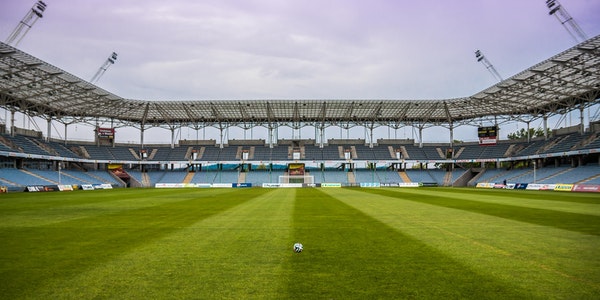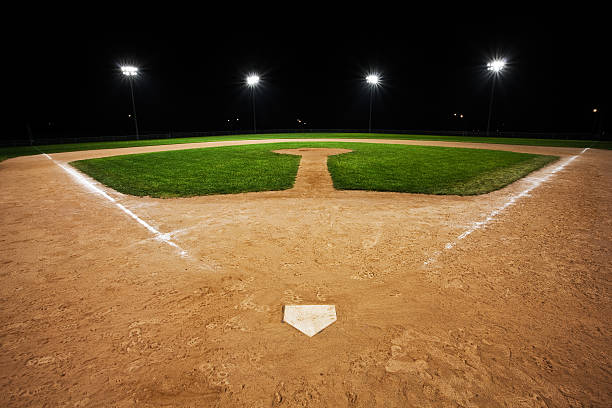- Energy Harvesting and Sustainable Innovations
- Solar-Powered LEDs:
Renewable Energy: Incorporating solar panels to power LED lighting systems, reducing dependency on grid electricity and promoting sustainability.
Battery Storage: Using battery storage systems to store solar energy for use during night events.
- Energy Harvesting Technologies:
Kinetic Energy: Harvesting kinetic energy from the movements of players and spectators to power LED lights.
Thermoelectric Generators: Utilizing temperature differences to generate electricity for LED systems.
- Biodegradable and Recyclable Materials:
Sustainable Manufacturing: Using biodegradable and recyclable materials in the production of LED lights to minimize environmental impact.
End-of-Life Management: Developing strategies for recycling and repurposing LED components at the end of their lifecycle.
- Enhanced User Experience
- Human-Centric Lighting:
Circadian Rhythm Support: Lighting systems that support circadian rhythms by mimicking natural daylight patterns, enhancing player performance and audience comfort.
Health and Wellbeing: Reducing eye strain and improving overall wellbeing through carefully designed lighting environments.
- Interactive Fan Experiences:
Personalized Lighting: Offering personalized lighting experiences for fans, such as seat-specific lighting effects controlled via mobile apps.
Social Media Integration: Integrating lighting effects with social media interactions, allowing fans to influence lighting through online engagement.
- 3D and Holographic Lighting:
Immersive Displays: Using 3D and holographic lighting to create immersive displays and visual effects during games and events.
Enhanced Visual Storytelling: Enhancing visual storytelling and entertainment through advanced lighting technologies.
Emerging innovations in LED stadium lighting are transforming the way sports venues operate, enhancing energy efficiency, improving user experiences, and promoting sustainability. By integrating smart lighting controls, advanced LED technologies, dynamic lighting effects, energy-harvesting solutions, and user-centric designs, stadiums can stay at the forefront of technology and provide exceptional experiences for players, spectators, and staff. These innovations not only deliver significant operational benefits but also position sports venues as leaders in environmental stewardship and technological advancement.
2. Potential future applications
As LED technology continues to evolve, its potential applications in stadium lighting are expanding beyond traditional uses. These future applications promise to enhance fan experiences, improve operational efficiencies, and contribute to sustainable practices. Here are some potential future applications of LED stadium lighting:
- Enhanced Fan Engagement and Experience
- Immersive Light Shows:
Pre-Game and Half-Time Shows: Coordinated light shows that synchronize with music and other multimedia elements to create captivating pre-game and half-time entertainment.
Interactive Light Displays: Allowing fans to interact with lighting displays via mobile apps, enhancing engagement and participation.
- Personalized Lighting:
Seat-Specific Lighting Effects: Customized lighting effects for individual seats, enhancing the viewing experience and creating unique experiences for VIP sections.
Fan-Controlled Lighting: Empowering fans to control certain aspects of the lighting through mobile devices, adding a layer of interactivity.
- Augmented Reality (AR) Integration:
AR Experiences: Using LED lighting to support augmented reality experiences, where fans can view additional content through AR glasses or mobile apps.
Virtual Participation: Allowing fans to participate in virtual games or activities that interact with the real-world lighting environment.
- Advanced Operational Efficiencies
- Predictive Maintenance:
AI-Powered Analytics: Utilizing artificial intelligence and machine learning to predict when LED fixtures will need maintenance, reducing downtime and ensuring continuous operation.
Automated Alerts: Systems that automatically alert maintenance teams of potential issues before they become critical.
- Adaptive Lighting Systems:
Real-Time Adjustments: Lighting systems that automatically adjust based on weather conditions, time of day, and event type to optimize visibility and energy use.
Occupancy-Based Control: Using sensors to detect occupancy and adjust lighting levels accordingly, ensuring energy is not wasted on unoccupied areas.
- Integration with Building Management Systems:
Centralized Control: Seamless integration with overall building management systems for centralized control and monitoring.
Energy Optimization: Coordinating lighting with HVAC and other systems to optimize overall energy use in the stadium.
- Sustainability and Environmental Impact
- Net-Zero Energy Goals:
Renewable Energy Integration: Combining LED lighting with renewable energy sources like solar or wind to achieve net-zero energy consumption.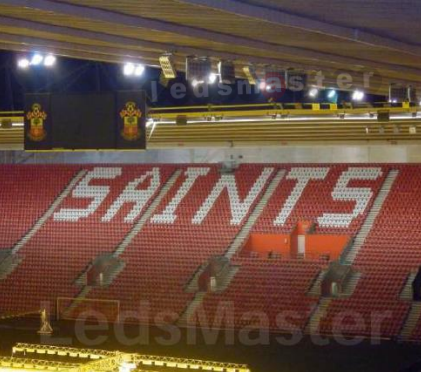
Energy Storage Solutions: Using advanced battery storage systems to store excess renewable energy for use during events.
- Biodegradable and Recyclable Materials:
Eco-Friendly Manufacturing: Developing LED fixtures using biodegradable or recyclable materials to reduce environmental impact.
Lifecycle Management: Implementing comprehensive recycling programs to handle the end-of-life disposal of LED fixtures responsibly.
- Carbon Footprint Reduction:
Sustainable Practices: Using energy-efficient LED lighting as part of broader sustainability initiatives to reduce the stadium’s carbon footprint.
Environmental Certifications: Achieving certifications like LEED (Leadership in Energy and Environmental Design) through sustainable lighting practices.
- Enhanced Security and Safety
- Intelligent Surveillance Lighting:
Integrated Cameras: LED fixtures equipped with integrated cameras for enhanced security and surveillance capabilities.
Smart Detection: Using lighting to highlight and track unusual activities or security breaches in real-time.
- Emergency Response:
Dynamic Emergency Lighting: LED systems that automatically switch to emergency lighting modes during evacuations or emergencies, guiding spectators to safety.
Real-Time Alerts: Integration with emergency alert systems to provide real-time information and instructions via lighting signals.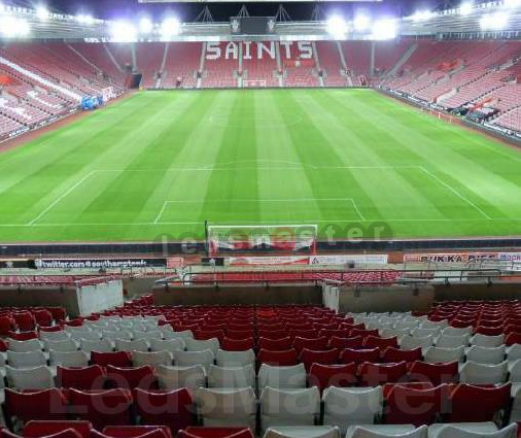
- Health and Wellbeing:
Circadian Lighting: Implementing lighting that mimics natural daylight patterns to support the circadian rhythms of athletes and staff, improving health and performance.
Low-Glare Fixtures: Designing fixtures that minimize glare and reduce eye strain for players and spectators.
- Innovative Event Experiences
- Multi-Purpose Lighting:
Versatile Lighting: Using adaptable LED lighting systems that can be easily reconfigured for different types of events, from sports to concerts and community gatherings.
Dynamic Color Changes: Lighting that can change colors and patterns to match the theme of the event or the branding of sponsors.
- Integration with Wearable Technology:
Wearable Light Devices: Providing athletes with wearable LED devices that can interact with the stadium’s lighting system for enhanced training and performance analysis.
Fan Wearables: Offering fans wearable LEDs that sync with the stadium lighting, creating a unified visual experience.
- Drone Light Shows:
Aerial Displays: Coordinating LED-equipped drones for aerial light shows, adding a spectacular visual element to events.
Interactive Performances: Combining drone light shows with other multimedia elements for immersive, interactive performances.
The future of LED stadium lighting holds exciting possibilities that extend far beyond traditional applications. By leveraging advancements in technology, stadiums can create more engaging and interactive experiences for fans, improve operational efficiencies, support sustainability goals, and enhance security and safety. These innovative applications not only enhance the overall event experience but also position stadiums as cutting-edge venues that are prepared for the future of sports and entertainment.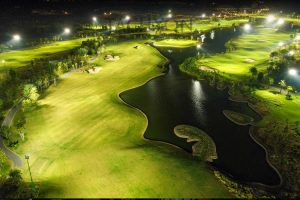
B. Integration with other stadium technologies
1. Synergies with audio-visual systems
Integrating LED stadium lighting with audio-visual (AV) systems can create a seamless and immersive experience for spectators, enhancing both the visual and auditory aspects of events. Here are several ways in which LED lighting can synergize with AV systems:
- Synchronized Light and Sound Shows
- Music and Light Synchronization:
Beat-Matched Lighting: LED lights that change color and intensity in sync with the music’s beat, creating a dynamic and immersive atmosphere during events.
Light Shows: Pre-programmed light shows that coordinate with music tracks, enhancing pre-game, halftime, and post-game entertainment.
- Integrated Visual Effects:
Projection Mapping: Combining LED lighting with projection mapping to create visually stunning effects on the field, stands, and stadium exterior.
LED Screens: Utilizing large LED screens to display synchronized visual content that complements the lighting and audio effects.
- Enhanced Fan Engagement
- Interactive Experiences:
Fan Participation: Allowing fans to control certain lighting elements through mobile apps or interactive kiosks, enhancing engagement and participation.
Social Media Integration: Integrating social media feeds with stadium lighting, where fan interactions can trigger light shows or display social media content on screens.
- Personalized Experiences:
Seat-Specific Audio-Visual Effects: Tailoring audio-visual effects for specific sections or even individual seats to create unique experiences for VIP areas or fan zones.
Augmented Reality (AR): Combining LED lighting with AR applications to provide fans with an enriched viewing experience through their mobile devices.
- Dynamic Event Atmosphere
- Mood Setting:
Pre-Event Ambiance: Using LED lighting to set the mood before the event starts, with thematic colors and effects that build anticipation.
In-Game Atmosphere: Adjusting lighting in real-time to reflect the pace and intensity of the game, enhancing the emotional impact for fans.
- Event-Themed Lighting:
Special Events: Customizing lighting to match the theme of special events, such as team colors for home games or festive colors for holiday events.
Branding Opportunities: Leveraging lighting for branding opportunities, where sponsors’ colors and logos are displayed through coordinated light and audio effects.
- Operational Efficiency
- Centralized Control Systems:
Unified Management: Integrating LED lighting and AV systems into a single control interface for streamlined operation and coordination.
Automated Sequences: Programming automated sequences for lighting and AV systems, reducing the need for manual intervention and ensuring precise timing.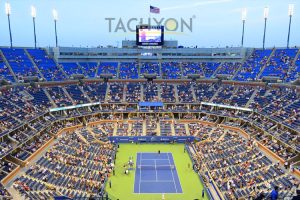
- Real-Time Adjustments:
Live Control: Enabling real-time adjustments to lighting and AV settings based on live events, such as goals scored, player introductions, or crowd reactions.
Remote Monitoring: Using IoT-enabled systems for remote monitoring and control, allowing operators to make adjustments from anywhere in the stadium.
- Safety and Security Enhancements
- Emergency Coordination:
Emergency Lighting: Integrating emergency lighting with PA systems to provide clear visual cues during evacuations or emergencies.
Real-Time Alerts: Using synchronized AV systems to deliver real-time alerts and instructions to fans, ensuring clear communication during critical situations.
- Crowd Management:
Directional Lighting: Using LED lighting to guide crowds during ingress and egress, improving the flow and safety of pedestrian traffic.
Surveillance Integration: Coordinating lighting with surveillance cameras to enhance visibility and security monitoring throughout the stadium.
- Innovative Uses and Future Potential
- Holographic Displays:
Holographic Shows: Combining LED lighting with holographic displays to create cutting-edge visual effects for entertainment and presentations.
Interactive Holograms: Allowing fans to interact with holograms during events, providing a futuristic and engaging experience.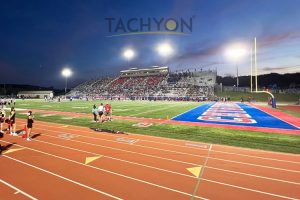
- Multi-Sensory Experiences:
Sensory Integration: Integrating lighting and AV with other sensory elements, such as scents and tactile feedback, to create a fully immersive environment.
360-Degree Experiences: Utilizing LED lighting and AV systems to create 360-degree experiences, where fans are surrounded by synchronized light and sound.
The synergy between LED stadium lighting and audio-visual systems opens up a myriad of possibilities for enhancing fan experiences, improving operational efficiency, and ensuring safety and security. By integrating these technologies, stadiums can create immersive, interactive, and dynamic environments that captivate audiences and elevate the overall event experience. As technology continues to advance, the potential for even more innovative applications will grow, positioning stadiums at the forefront of entertainment and sports technology.
2. Role in smart stadiums and connected environments
LED stadium lighting is a critical component in the development of smart stadiums and connected environments, offering numerous benefits that enhance the overall experience for fans, players, and operators. Here’s an in-depth look at the role of LED lighting in these advanced ecosystems:
- Energy Efficiency and Sustainability
- Reduced Energy Consumption:
Smart Controls: LED lighting systems integrated with smart controls can adjust brightness and intensity based on real-time needs, significantly reducing energy consumption.
Scheduled Lighting: Automated schedules for lighting based on event timings, daylight availability, and occupancy levels to optimize energy use.
- Renewable Energy Integration:
Solar-Powered LEDs: Incorporating solar panels to power LED lighting systems, contributing to the stadium’s renewable energy initiatives.
Energy Storage: Using battery storage systems to store excess energy generated by renewable sources for use during events.
- Sustainable Practices:
Eco-Friendly Materials: Utilizing biodegradable and recyclable materials in LED lighting fixtures to minimize environmental impact.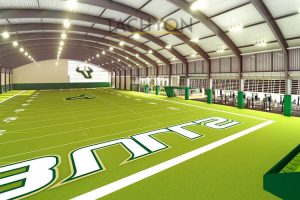
Carbon Footprint Reduction: Enhancing the stadium’s sustainability credentials through energy-efficient lighting and reduced carbon emissions.
- Enhanced Fan Experience
- Dynamic Lighting Effects:
Immersive Light Shows: Creating captivating light shows synchronized with audio and visual elements to entertain fans before, during, and after events.
Personalized Experiences: Providing personalized lighting effects for different sections or individual seats, enhancing the fan experience.
- Interactive Technologies:
Mobile App Integration: Allowing fans to control certain lighting aspects via mobile apps, creating interactive and engaging experiences.
Augmented Reality (AR): Using AR to overlay digital information and effects onto the real-world stadium environment, enhancing the viewing experience.
- Enhanced Visibility and Comfort:
High-Quality Illumination: Ensuring optimal visibility for fans and players with high-quality, flicker-free LED lighting.
Adaptive Lighting: Adjusting lighting levels to reduce glare and eye strain, enhancing comfort for spectators.
- Operational Efficiency
- Centralized Management:
Unified Control Systems: Integrating LED lighting with other stadium systems (HVAC, security, AV) into a single platform for streamlined management.
(To Be Continued)

